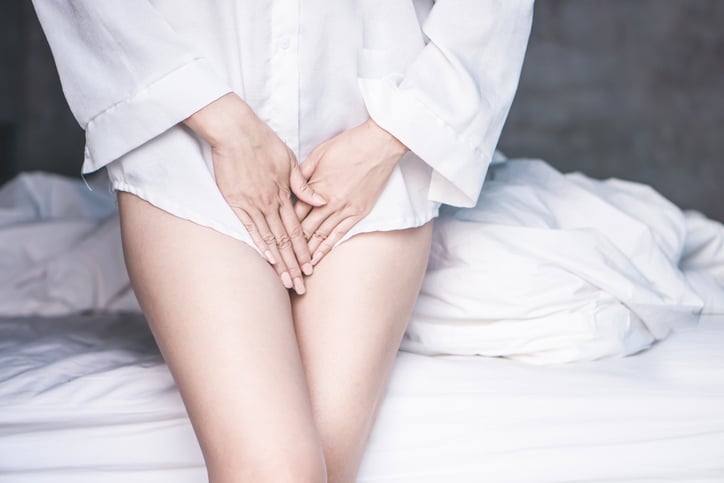Gynaeco-external / mucous membranes

Gynaeco-external / mucous membranes
What is it? What is its place in dermatology?
All diseases located in the vulvar region in women and in the glans in men are concerned. The vulva is an anatomical region that is connected to several specialties such as dermatology, gynaecology, urology and endocrinology. Most vulvar dermatoses also affect other areas of the body and are therefore closer to the Dermatologist (eczema, psoriasis.)
What types of pathologies are treated?
The vulva is the frequent site of irritation dermatitis which is secondary to maceration phenomena or secondary to too intense hygiene care which will then be eczematous by numerous topical substances such as antiseptics and antimycosics.
It can be said that infectious causes are at the origin of most problems in young women, whereas precancerous and cancerous vulvar lesions are more the preserve of postmenopausal women.
Some examples:
Infectious vulvitis
- Infection of bacterial origin such as pseudomonas aeruginosa, mycobacteria and streptococcus infections These three types of vulvitis are treated with specific antibiotics.
- Viral infection These are poxvirus infections that can occur on the skin side of the labia majora and surrounding skin. hese lesions may be profuse in appearance or may present as tumours or pseudo-vegetative and may reflect immunosuppression for which biological investigations may be required. These lesions are usually treated by curettage, fine electrocoagulation, or CO2 laser volatilisation.
- Mycotic infection, most often of candidal origin, results in vulvovaginitis rather than simple vulvitis. Disinfection treatments give good results.
Vulvar melanoma lesions
Most genital pigmented lesions are benign. However, their diagnosis requires early detection of melanoma. All suspicious melanoma lesions should be examined carefully for histological examination to rule out melanoma or pigmented epithelial tumour.
Malignant tumour lesions
- Vulvar squamous cell carcinoma: occurs most frequently on two types of pre-cancerous lesions such as undifferentiated dysplasia (Bowen’s disease) or on differentiated dysplasia lesions (such as leukoplastic or erythro leukoplastic lesions).
- Paget’s disease: usually occurs in postmenopausal women. Presents as a single, often extensive, slightly scaly plaque on the skin rather than the mucosa, with an eczematous appearance requiring biopsy.
Vulvar location of some dermatoses
- Lichen planus: the lesions consist of whitish papules arranged in a network grouped in small plaques or sometimes lesions combining erosions with erythema. The treatment of mucosal lichen planus is palliative, i.e. no treatment allows a definitive cure, but beneficial effects are still obtained by local corticosteroid therapy or, more rarely, by general treatment.
- Vulvar lichen sclerosus: it occurs in half of the cases after the menopause but it can also be seen in young adults and even in little girls. Itching is usually the telltale sign A change in the appearance of the vulval mucosa may be observed, with a whitish or ivory-coloured appearance with a rough surface or loss of suppleness. Atrophy of the mucous membranes is also present and partial or total effacement of the labia minora. The treatment of vulvar lichen sclerosus is medical.
- Vitiligo: vitiligo is common on the vulva, forming very well defined white patches often surrounded by hyperpigmentation.
- Psoriasis: constitute red or pinkish patches, smooth and well defined, elongated on the free edges of the labia majora or in the folds, often symmetrical, sometimes cracked at the bottom of a fold.
- Seborrheic dermatitis: gives a slight or no pruritus, constituting red or pinkish patches sometimes a little scaly, predominantly on the free edges of the labia majora in poorly defined hairy areas, mainly in young people.
- Contact eczema: giving pruritus as well as a diffuse erythema poorly limited predominantly to areas of contact with underwear. Diagnosis is made by patch testing: treatment consists of removal of the allergen.
- Aphthosis: Vulvar aphthosis is rarely isolated, it is most often associated with oral aphthosis.
Vulvodynia
Vulvodynia is defined as an uncomfortable sensation in the vulva giving a burning sensation such as cooking or irritation without any clinical abnormality being noted. A clarification is necessary.
What types of treatment?
After possible development, classic treatment with drugs (infections, etc.) by local treatments in the form of a cream or more recently with laser, eg: laser mona lisa, very indicated in problems of gynecological mucous membranes.
PRP is also used in these painful pathologies (dyspareunia, vaginitis, etc.).


